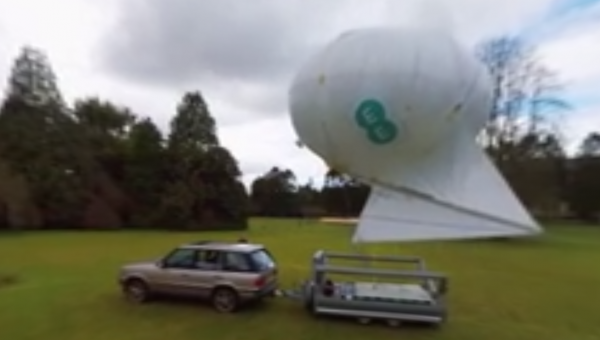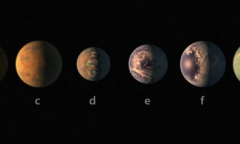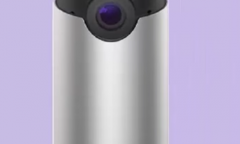By Vishal Goel, | February 23, 2017

The basic idea of the technology is to use an airborne craft to beam signal down to users below, just like Facebook's drone and Google's balloon. (YouTube)
British mobile network provider EE plans to use drones and balloons to provide 4G coverage to rural areas in the UK. The helium balloons, called "Helikite," hover at a height of about 150 feet and cover an area four kilometers wide. The drones can provide coverage over an area two kilometers wide for a few hours.
Like Us on Facebook
According to the mobile carrier company, its "air mast" network could be used in the wake of natural disasters as well as during events like soccer matches, where crowds congest mobile networks. The company, owned by BT, plans to deploy its technology in the field for the first time this year.
The basic idea of the technology is to use an airborne craft to beam signal down to users below, just like Facebook's drone and Google's balloon. The miniature blimps and drones are equipped with miniature mobile sites, including a basestation and an antenna, which supply LTE coverage (or 4G, as it's known in the UK). While the blimps cover an area four kilometers wide, the drones are more of a temporary measure providing a coverage over an area of two kilometers for only a few hours at a time.
In a press statement, EE CEO Marc Allera said that a technology like this would "revolutionize the way people connect." He further added by talking about the new concept they are developing of "coverage on demand" that can be crucial in situations like an event organizer requesting a temporary EE capacity increase in a rural area, or a climber going up Ben Nevis could order an EE aerial coverage solution to follow them as they climb.
These blimps and drones provide a PR-friendly face for EE's management of the UK's Emergency Services Network or ESN, which is a comms network dedicated to emergency services. For this, though, EE would not use its drones or blimps, but a fleet of 32 "rapid response vehicles," which are Mitsubishi trucks retrofitted with 11-foot mobile masts. In emergency situations or when networks are down due to maintenance, these trucks will be deployed to ensure that the police, fire service, and ambulances never lose signal.
-
Use of Coronavirus Pandemic Drones Raises Privacy Concerns: Drones Spread Fear, Local Officials Say

-
Coronavirus Hampers The Delivery Of Lockheed Martin F-35 Stealth Fighters For 2020

-
Instagram Speeds Up Plans to Add Account Memorialization Feature Due to COVID-19 Deaths

-
NASA: Perseverance Plans to Bring 'Mars Rock' to Earth in 2031

-
600 Dead And 3,000 In The Hospital as Iranians Believed Drinking High-Concentrations of Alcohol Can Cure The Coronavirus

-
600 Dead And 3,000 In The Hospital as Iranians Believed Drinking High-Concentrations of Alcohol Can Cure The Coronavirus

-
COVID-19: Doctors, Nurses Use Virtual Reality to Learn New Skills in Treating Coronavirus Patients











